As riders have evolved and specialized in different Western events, saddlemakers have become more sophisticated, too. Now there are all kinds of discipline-specific saddle elements and customizations for multiple events. A saddle’s seat and cantle play a major role in determining a saddle’s type and influencing your ability to ride more effectively.
[More About: Saddle Selection]
For example, say you ordinarily ride a seat like that in Photo 4. If you’re practicing your reined work and stopping and need to sit deeply, it would be difficult to accomplish in that saddle. But if you were in a saddle like the one in Photo 2, you’d have much better success sinking deep into the saddle.
Choosing a saddle is similar to choosing a car: When you go car shopping, you see a lot that look alike. Once you start trying them, you notice differences. The more experience you have, the more you can feel what you need for your event.
I’ll discuss five seat/cantle combinations here, explaining which discipline is best for each. While you can ride any seat for any Western discipline, you’re more able to get into the correct position and cue your horse in one made for your chosen event.
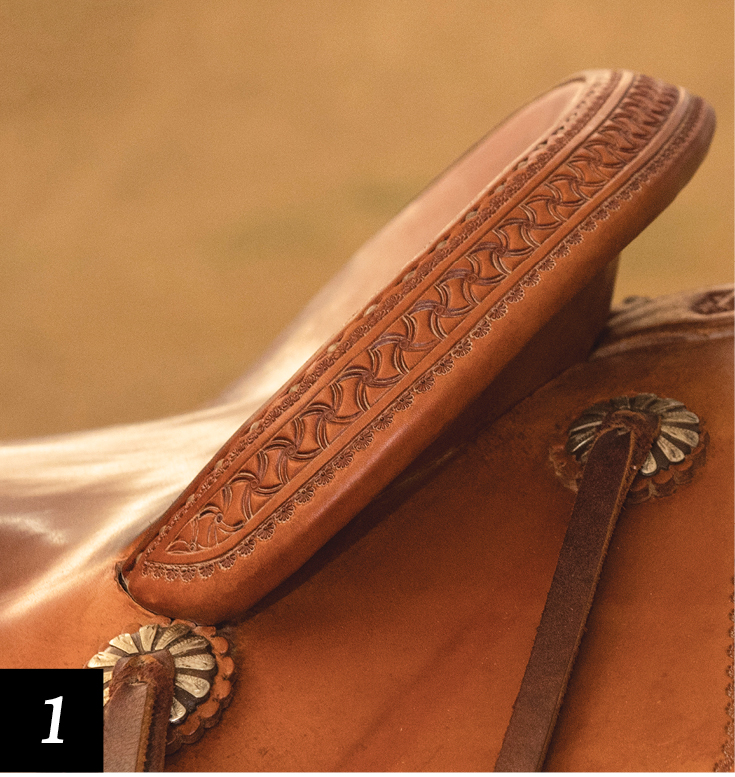
1. Best event: Cutting.
Design specifics: This is a pretty typical seat and cantle for cutting. The cantle is laid-back enough that it doesn’t interfere with your movement in the saddle, but it still allows you to sit deeply when your horse stops. A cutting saddle should allow you to slide forward and back in your seat because cutting has many unpredictable moves. The smooth seat gives you this leeway and puts you in close contact with your horse.
Takeaway: You don’t want to stick in a cutting saddle. You need to be able to move around for this athletic ride, which requires a laid-back cantle and a smooth seat.
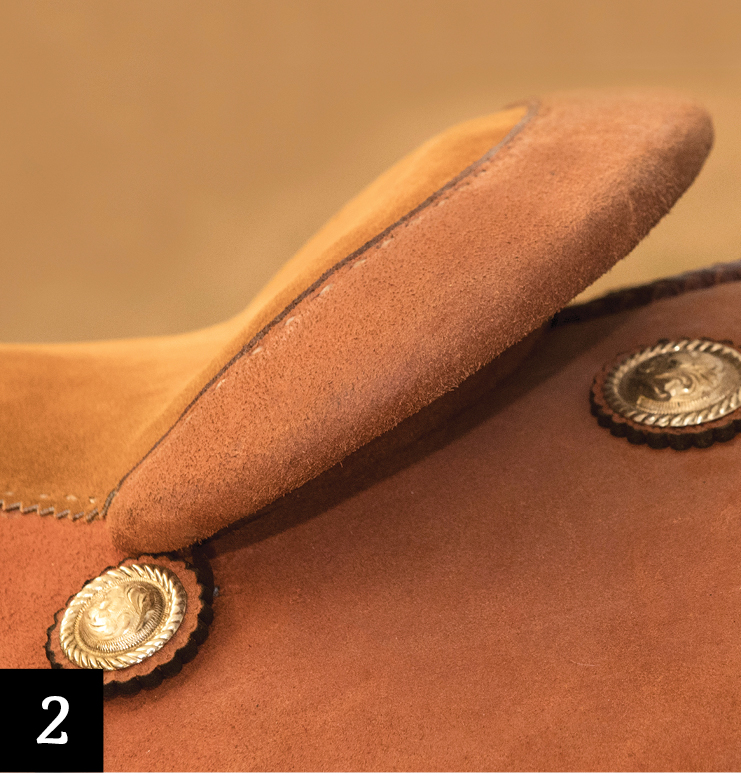
2. Best event: Reining.
Design specifics: Saddlemaker Art Vancor was instrumental in developing this longer, thicker cantle and binding. It’s designed for looks and for function. The way it’s tied in doesn’t interfere with the corner of your hip when you ride. It’s laid back far enough to give you a good pocket that provides you a solid seat. Other performance classes started using this binding because so many riders liked it. You can see that the seat here is more cushioned than the one on Photo 1. It’s double-padded and is roughout leather, which secures your seat more than smooth leather.
Takeaway: A less experienced rider might be uncomfortable in this seat and cantle at first because there’s little holding him or her in position—it’s a shallow pocket. But it’s a very comfortable ride and quite common.
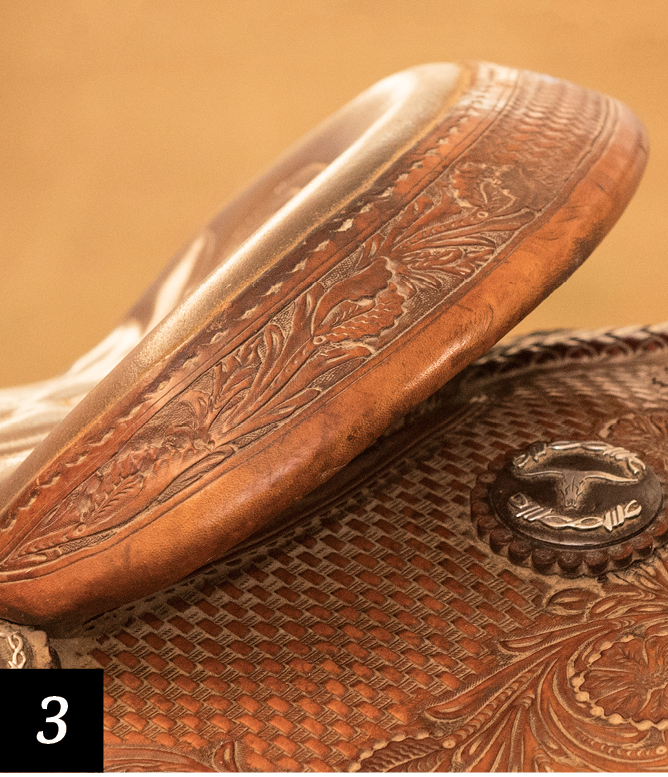
3. Best event: Roping.
Design specifics: I prefer a lower cantle on my roping saddle, like this one. It allows you to remove pressure from your horse’s hindquarters when you stand in your stirrups to rope. It pairs with the seat to hold you in while you ride more forward as your horse bursts from the roping box. You can see that the seat has minimal padding—it’s a smooth leather seat, so you can easily stand in your stirrups.
Takeaway: I designed this saddle as more of a stock-type roping saddle, so I could use it for various riding activities. I like to be able to move around when I rope, and the flat, smooth seat and lower cantle allow for that freedom.
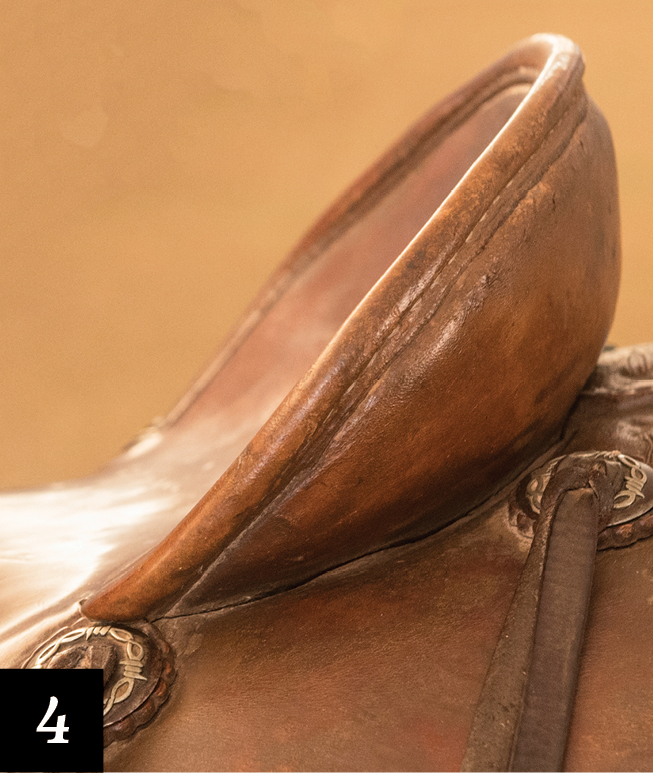
4. Best event: Cowboying on the ranch.
Design specifics: This saddle is called a “ranch cutter.” We use it mainly for starting colts. The higher cantle gives a little more security in the seat, which is necessary when putting the first few rides on an unpredictable colt. This is a traditional saddle style that many buckaroos prefer. The hard, smooth seat allows you to stay close to the horse, move around as needed, and get back into position quickly.
Takeaway: Notice that there’s not a lot to this saddle. There’s no padding in the seat, and the binding on the cantle isn’t ornate or bulky. This means the saddle is lighter in weight than some of the others shown here, which is good for colt starting and easier for a ranch cowboy to transport.
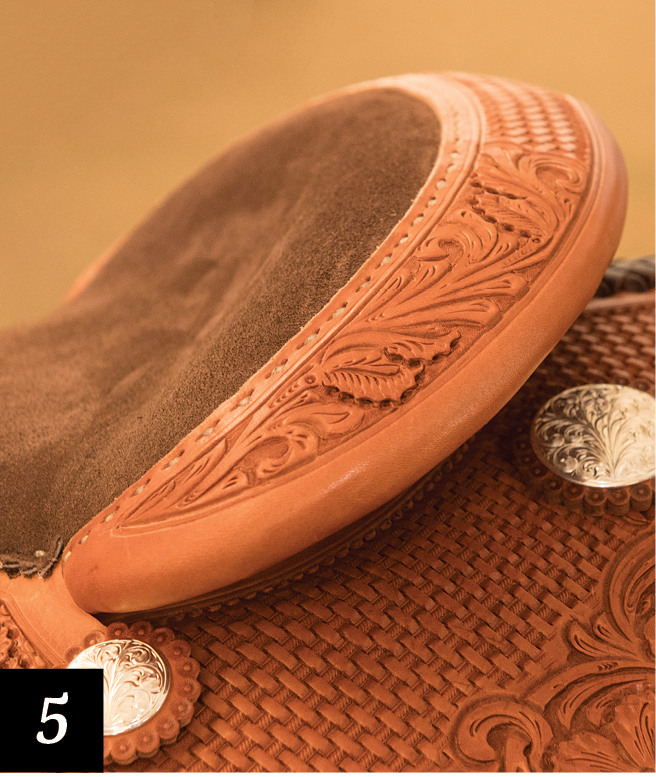
5. Best event: All-around.
Design specifics: A nice little pocket and a flat seat make this saddle optimal for Western all-around events, from horsemanship to trail to Western riding. It has a wider binding—especially wider than the saddle for starting colts—and more tooling than the other saddles. The roughout seat helps to hold you in position, especially for events such as horsemanship.
Takeaway: A Western all-around saddle offers versatility for those arena events. It can also be seen in the reining arena.






